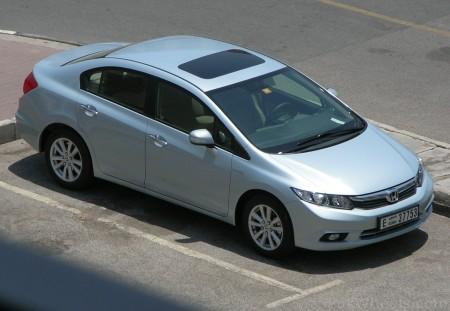
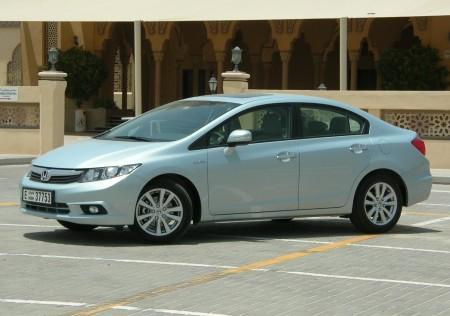
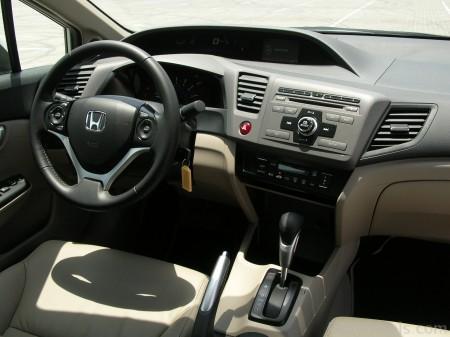
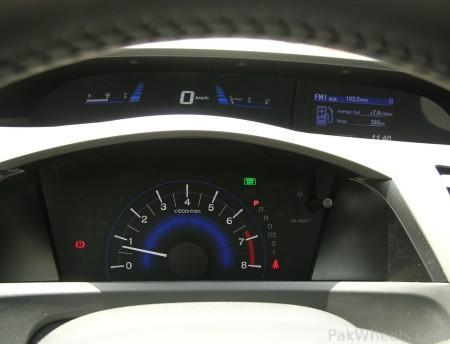
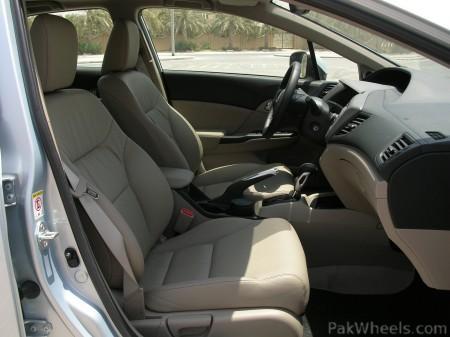
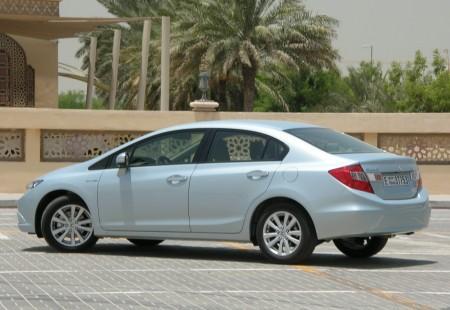
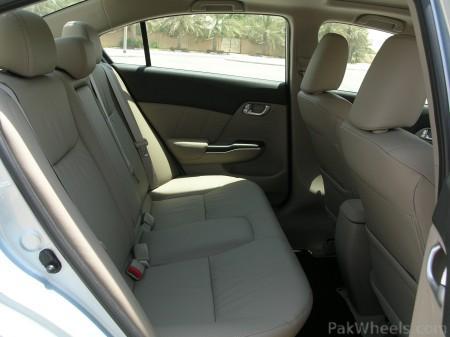
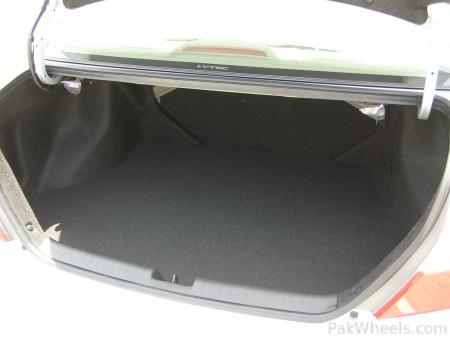
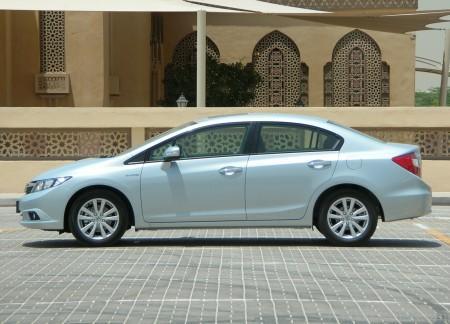
Source:Drive Arabia - Dubai Live - UAE, Saudi, Kuwait, Oman, Qatar, Bahrain and GCC
The Honda Civic gained fame back in the 1970s for its fuel-efficiency. It became even more popular in the 1980s for its futuristic styling. It truly set the bar high by the 1990s, with its superb double-wishbone suspension and entertaining VTEC engine. Then jaws dropped in 2006, and for half-a-decade since then, it led the class in more ways than one. And then there is this new model for 2012, more controversial than ever.
Ironically, it is the conservative exterior that is generating the most controversy. The truth is, the Civic had been a stylistic bore from 1996 all the way till 2005. But it took such a leap forward in 2006 that anything that we always knew it'd be a tough act to follow. The outgoing model simply looked better, even though there is nothing stylistically wrong with the 2012 model. Still, however it looks, styling was never the reason why the Civic sold in huge numbers.
The perfectly-assembled Civic remains among the most spacious compact sedans in its class, even after losing 30 mm of its wheelbase, though the overall length is no shorter than before. What has changed is the quality of the cabin materials. All soft-touch stuff on the dash and door-sill panels have been replaced by hard plastics. Granted, they are nicely-textured solid-feeling hard plastics that don't feel hollow when you play knuckle-drums on it, but now the Civic isn't a class-leader on that front any more. However, while the previous model had hard armrests draped in a thin layer of cloth, our new model had nicely-padded elbow-rests and door inserts, so technically it is actually more comfortable. Our top-spec VTi model's optional leather was also very nice to feel up.
Legroom and headroom, both front and rear, almost approaches midsize levels, with a flat rear floor. The luggage boot is pretty sizeable for a compact, made even more practical with split-folding rear seats. There are four cup-holders, the front ones now without the sliding cover found in the old model, while all the door pockets are a bit on the small side. Smaller cubbies, shelves and pockets here and there make the cabin more practical.
The redesigned dash still houses a two-tier instrument panel, but with some premium upgrades. The digital speedo now has some blue-green lights that change colour to show how economically you're driving. And in all but the base model, there is a little full-colour “i-MID” screen to the right, showing trip computer, Bluetooth, stereo and other settings in pretty animation. A working Bluetooth phone is now integrated with buttons on the steering wheel, alongside cruise control, “i-MID” and stereo buttons. The CD/MP3 stereo is above-average, with available USB and AUX ports, and tweeters in the A-pillars. The single-zone auto a/c gets freezing, although it takes a while to reach that level if left out in 46-degree heat, as in our August test. Other features in the VTi include manually-adjusted front seats, sunroof, basic keyless entry, HID headlights with fogs, and the usual power accessories. On the safety front, front airbags and active headrests are standard, while only the VTi gets side and curtain airbags.
The 1.8-litre engine is unchanged, at least on the surface. Producing 139 hp at 6500 rpm and 173 Nm of torque at 4300 rpm, it is still mated to a basic 5-speed automatic. The rev-happy engine only makes itself heard on hard acceleration, but it turns over at only 2300 rpm while doing 120 kph. That speaks volumes for fuel economy obviously. The “i-MID” was showing a fuel consumption figure of only 8.3 litres/100 km by the end of our road test, going as low as 7 litres/100 km if driven a bit conservatively, a fair bit better than before. Of course, it seems to have taken a hit on brute performance, as we recorded a 0-100 kph time of 11.8 seconds, although we'd chalk some of that up to the summer weather and a new engine that's done only a couple of hundred miles. There is also an "ECON" button to reduce consumption further, but it's a ridiculous feature, considering the first thing it does is drastically reduce a/c performance.
Comfort levels are pretty good, possibly better than the old model. It still rides on four-wheel-independent suspension, when most others, including the new-age Koreans, still use a cheap live-axle rear. The ride quality is largely smooth, without the floatiness of a Corolla or the harshness of a Focus. The road noise is moderately noticeable on some roads, but only because wind noise is very muted. On the highway, all-round visibility is good, but the electric steering is so light now that constant corrections need to be made to keep the car straight on breezy days.
The steering used to be one of the better bits of the old Civic, but now it is lifeless, making it easier for parking but not for piloting fast around turns. The “chassis” is noticeably less agile, but we found ways of having fun with that. Body roll is never excessive, but swing the steering left-and-right like an animal and it is possible to mildly drift the rear around corners. Yet regular commuters will never be bothered by this because the safety net of stability control and ABS are now standard on all Civics. The disc brakes are as good as the class-average, while the 205/55 tyres on 16-inch alloys are easy to squeal at the safely-understeering limit, just as before. So is the new Honda Civic really worse than before, as many claim it to be? The truth is Honda has simply shifted their priorities with this model, making it more appealing to the conservative-commuter majority rather than catering to the racer-wannabe minority. While it has lost that minor entertainment factor and flamboyance, what it's gained is better comfort, efficiency and even gadgetry. The only real problem is the gigantic price premium over similar cars. With that hard-plastic cabin and basic drivetrain, it was obviously designed to compete with Hyundai Elantras and Chevy Cruzes rather than VW Golfs and Nissan Altimas. A combination of overvalued currencies, factory politics and local dealers all conspire against what is otherwise a solid entry in this segment, easily the best in build quality, but not the best value any more.